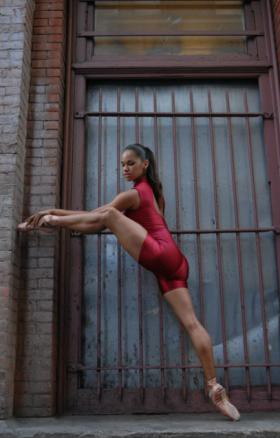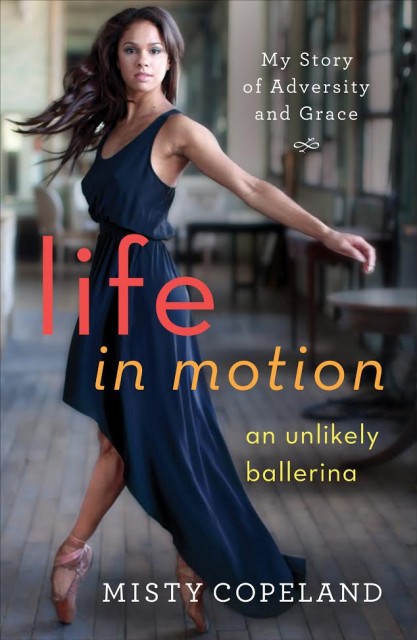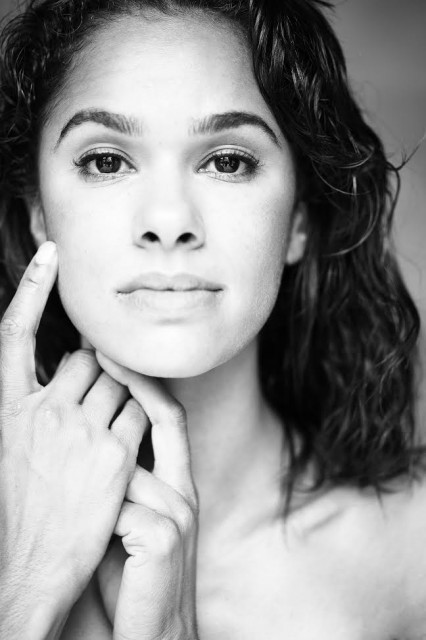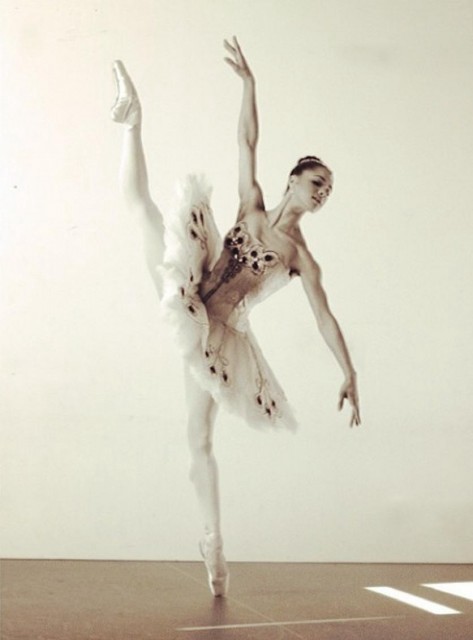Talking to Misty Copeland About Race, Class and Ballet

Misty Copeland took her first ballet class at age 13 and performed as Clara in the Nutcracker eight months later. Four years after that, she joined the American Ballet Theatre as a corps member, and in 2007 she became the company’s only black female soloist. She was also the first in decades, only the third in the company’s history, and has for years been the only black woman dancing in the company at large.
You came to ballet late, at age 13; the first time you came to the barre, you were wearing gym clothes. What did those first experiences feel like?
I initially felt like a fish out of water. I grew up on soul and hip hop, so I didn’t understand the classical music, how to count it, or how to find the rhythm. But the physical movement came quite easily to me, even though I couldn’t grasp what I was doing.
And still you were on pointe within a few months and were recognized as a prodigy right away. What did that word mean to you?
That word meant nothing to me until I was a professional living in NYC dancing for ABT. It wasn’t until then that I realized the weight that word held. That I might have this huge standard to live up to as a professional.
Around that same time, you were sort of accelerated into adulthood. In your book you wrote about ballerinas tending to be late bloomers in life, physically and otherwise: how you didn’t get your period till the doctors induced it via birth control at 19, and then your body changed dramatically and fast. I can’t imagine how strange that must have been in such a concentrated dance environment.
The physical shift was intense. I no longer had control over my instrument: my body. Day to day was a struggle never knowing how my body was going to look and respond to what I was doing and feeding it.
But, that was when I realized how much there was to offer outside of ballet. I was searching for a connection to people and I no longer felt that in the ballet studio. I started to embrace it more within the urban community of the city. I think it helped me to grow and become a whole person that most dancers don’t experience if you’re locked in a studio your whole life.

You’re biracial and identify as black: I wondered if your racial identification ever changed or shifted its meaning growing up and throughout your time in ballet?
I never struggled with my identity being black, white or other. From the time I can remember, my mother raised me and my siblings to identify with being black. I found comfort in meeting other biracial people as a kid, and I found that in my obsession with Mariah Carey. And I was never identified as white in the ballet world, that’s for sure. I’ve always stood firm on the fact that I am a black women and that’s how the world will view me. Especially the ballet world.
You talked about choreographing routines to Mariah Carey when you were little, and letting off steam at the club when you moved to NYC. Do you still play around with hip-hop?
I absolutely do. You can see it all over my Instagram. I have grown to love dancing to classical music, but there’s something freeing for me to make classical ballet work to any music. I love improvising moves to pop, soul and hip hop music.
And one time you worked with Prince! What’s your best memory of working with him?
My best memory of working with Prince was the time spent on the stage with him during shows. We had so much fun off the stage hanging out, listening to music and going to parties, but being in a performance setting brought something very special out of both of us. It’s like we became different people and challenged each other artistically.

Who’d be your top pick to work with now?
I would love to work with James Blake.
People wanted to pull you into contemporary for reasons related both to your expressiveness and also your “non-traditional” look: what made you stand firm in wanting to stay a classical ballerina?
I was always aware of my innate awareness of movement, but I wanted to prove that my classical technique was my strength. I trained as a ballerina and nothing else. I didn’t work for all these years to be out on the stage as a modern or contemporary dancer.
If given an empty studio and a day all to yourself, what would you do? What music would you put on?
I love to improvise. I would put on some Etta James, James Blake, Drake, Beyoncé, Frank Ocean…
How often do you get off stage and think, “I did that perfectly”?
It’s rare. Just a handful of times in my 13-year professional career. There are days your body is just more capable and days when you are so relaxed that your artistry and the character you’re portraying easily oozes out. That’s the cool thing about performing in front of a live audience and never knowing how your body will respond each day. It’s like diving into the ocean blindfolded.
You talk in the book about the corps member entry salary, which isn’t much, especially in New York, and it made me think about how much a factor like that might keep the ballerina population (like so many other populations!) to people that start off wealthy. What was it like dealing with this rarefied class situation in ballet?
I had times of struggling during our layoff seasons, and I couldn’t turn to mommy and daddy to help me out. If anything, I was the one helping my family out when I could. And now, it’s amazing to have so many opportunities because of ballet and to now make enough money to comfortably help them out. The class situation in ballet is what it is: yes, most come from money in this world, but I couldn’t resent my peers for something they couldn’t help.

If you’d known the obstacles you were going to face when you started out, would you have done anything differently?
Not at all. I would have taken on the ballet world again and again because of what it’s given me as a person.
And you seem really ready to take on criticism and engage it head-on: you use social media, read comments. Whose criticism matters most to you?
My artistic directors and my own. In the end, ABT’s artistic director Kevin McKenzie is who’s putting me on stage and of course I have to be happy with me everyday. Other critics’ words are fleeting and subjective.
How do you deal with the idea that sometimes gets thrust on you, that you are playing or benefiting from some sort of a race card?
It actually makes me laugh. The race card doesn’t exist in the ballet world. Those words to me are so ignorant, especially coming from people inside this world. People aren’t trying to put diversity on the stage to better their companies or brands. The ballet world could care less. They have survived in this bubble forever; it really doesn’t affect their audiences, whether or not there’s a black woman on stage.
Do you think this will change?
I do see the ballet world taking steps over the next decade to include more diversity. I think the dialogue has been opened up for the world to peek in, and it’s definitely going to change.
First and last photos courtesy of Misty Copeland’s Instagram. Her memoir Life in Motion is available for purchase, and it’s a wonderful read.